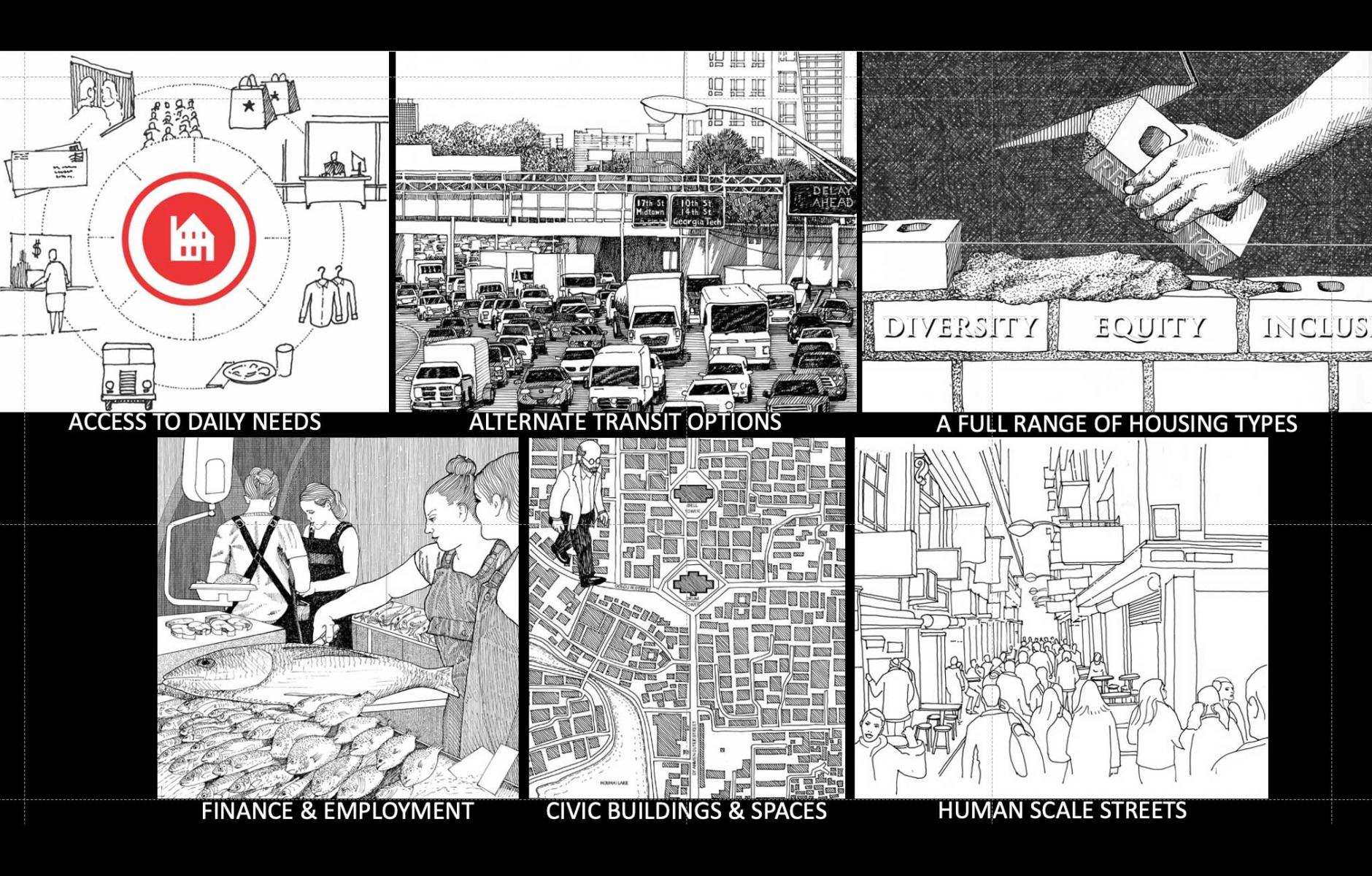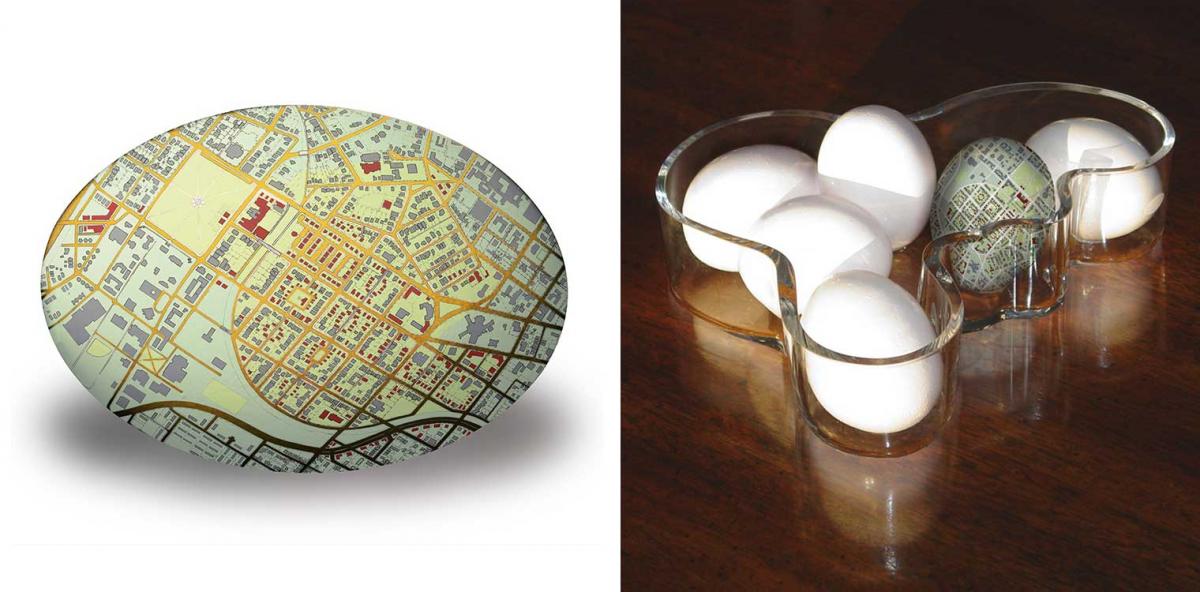
Thirteen characteristics of walkable neighborhoods
A few weeks ago, real estate professional Mike Hathorne posted 13 physical characteristics of neighborhoods on LinkedIn, which he paraphrased from Dhiru Thadani’s 2010 tome, The Language of Towns and Cities: A Visual Dictionary.
I sent the list to Thadani, who endorsed the wording and sent images as illustrations. It’s a great list, and good to keep in mind as we try to build more walkable urban places. Neighborhoods are the center of that quest, the middle scale. Most of the qualities and benefits of urban places come together in neighborhoods that are appropriately designed. Below are the characteristics, a checklist that represents a Platonic ideal of the neighborhood. Most walkable neighborhoods have these qualities, or at least nearly all of them.
1. The neighborhood is the increment of planning. A single freestanding neighborhood is a village.
2. The neighborhood is limited in size to a 5-minute walk (0.25 miles, 400 meters) from edge to center, where the needs of daily life are available.
3. Neighborhood streets are in an interconnected network, allowing multiple routes to destinations.
4. Neighborhood streets are spatially defined by buildings.

5. Neighborhood buildings are diverse in function but compatible in terms of size and configuration on the lot.
6. The civic buildings of a neighborhood are located in important areas, for example, attached to squares.
7. Neighborhood open space is defined rather than amorphous.
8. Everyone living in a neighborhood has independence of movement, since activities of daily life are within walking distance.
9. Reduced auto trips means less traffic and lower costs.
10. Human-scale streets and squares provide opportunity for social interaction.
11. Transit is made feasible by providing sufficient density near transit stops.
12. There is a full range of housing types and workplaces, allowing age and economic integration.
13. Civic buildings and spaces encourage democratic initiatives.




